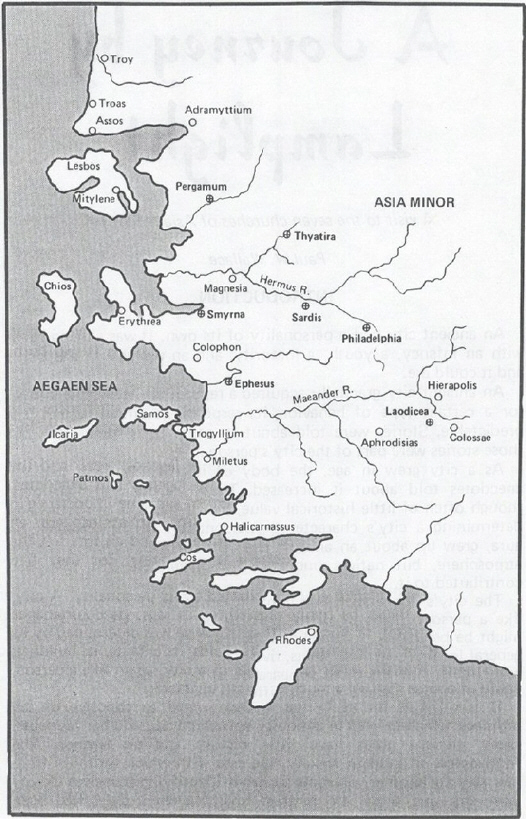A Journey by Lamplight A visit to the seven churches of Asia — Part I -- By: Paul W. Wallace
Journal: Bible and Spade (First Run)
Volume: BSP 05:1 (Winter 1976)
Article: A Journey by Lamplight A visit to the seven churches of Asia — Part I
Author: Paul W. Wallace
BSP 5:1 (Winter 1976) p. 1
A Journey by Lamplight
A visit to the seven churches of Asia — Part I
Introduction
An ancient city had a personality of its own. It was a living being with an infancy, a youth, a maturity, and an old age. It was born, and it could die.
An ancient city gradually acquired a reputation. It became known for a certain type of behavior; its response to circumstances was predictable. Stories were told about it, some true, some false, but those stories were part of the city’s personality.
As a city grew in age, the body of its legends grew, and the anecdotes told about it increased. These legends and anecdotes, though often of little historical value, are of supreme importance in determining a city’s character or personality. An atmosphere, an aura, grew up about an ancient city; travellers and visitors felt the atmosphere, but natives understood it intimately, for they had contributed to it.
The city’s appearance also contributed to its personality. A city, like a person, might be richly dressed, or in rags. Its countenance might be beautiful, or homely. Its appearance was determined by its general location, its mountains, rivers, fields, its climate, its buildings and streets. And the outer appearance of a city, again like a person, could of course conceal a much different character.
It is difficult for us in the modern world to conceive of the intimacy which existed in antiquity between a city and her residents. Many modern cities have little history and no legends. The rootlessness of modern society, the ease with which we move from one city to another, prevents us from identifying ourselves closely with any one place. In contrast, many ancient cities had been
BSP 5:1 (Winter 1976) p. 2

Fig. 1. Locations of the Seven Churches of Asia in Western Turkey.
BSP 5:1 (Winter 1976) p. 3
inhabited before human memory; a person’s father and forefathers, back through countless generations, had lived, died, and returned to the native soil in that very place. The locality was alive with personal relationships. Every spring, every hill, every grove had its story, legendary or historical. And every inhabitant knew these stories and associated them with himself. So intimately associated were the inhabitants and the city, that the barest allusions could conjure up relationships of great depth and meaning.
St. John, in Revelation 2 and 3, employed such allusions with powerful results. There is no lack of studies on t...
Click here to subscribe
